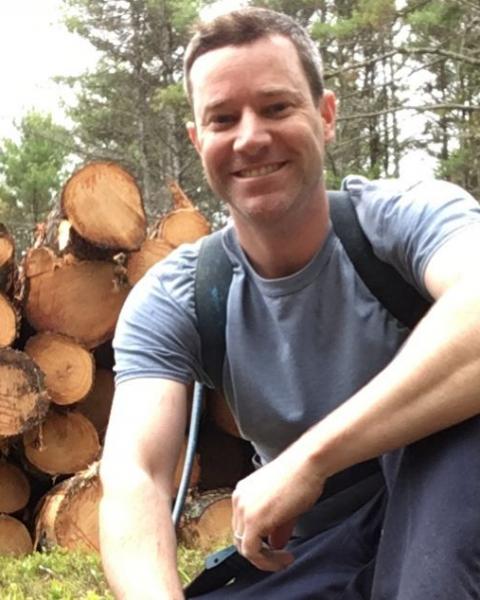Cutting Firewood? It's Not What You Cut
The best firewood comes from tall, straight, limb-free hardwood trees like oak, maple, ash, birch and hickory—those are the easiest trees to fell, buck into stove-length pieces and split. And as it just so happens, those are some of the same trees that make the best sawlogs. That’s why making the right choice when picking trees to cut for firewood on your woodlot is so important.
Imagine a beautiful oak tree standing in your woods. The tree is 16-inches in diameter and contains 1½ logs of useable wood. (In New Hampshire’s forest products industry a standard “log” is 16 feet long; however, in practice, logs are typically cut in length anywhere from 8 to 16 feet depending on the tree.) An oak that size contains about 150 board feet of lumber. If, instead, you turn that same tree into firewood, you would end up with about 0.22 cords. Why does that matter? At current market rates, you might receive about $55 for the sawlogs but only a little more than $3 for the firewood. That’s a difference in value of more than 18-times! That can quickly add up, even on a small property. So, how do you decide which trees to cut for firewood now and which trees to leave growing?
First, turn off your chainsaw. It’s tough to think several decades into the future with a two-stroke engine idling in your hands. Next, grab a roll of flagging tape and take a walk to mark your trees. Foresters mark, or select, which trees will be cut before a timber harvest. I prefer to mark the trees that I plan to cut; however, it’s okay to mark “leave” or “keep” trees instead. It can be hard to get started, so if I’m having trouble, I look for the nicest looking tree around—I know that tree isn’t going to end up in my woodpile!
Some foresters call a woodlot’s nicest trees “crop trees.” Crop trees are usually straight, have few limbs on the lower stem, and have a large, healthy crown. In short, they have lots of future potential. Often, but not always, crop trees are a high-value commercial species like red oak, sugar maple or yellow birch. And although I tend to favor certain species for crop trees, I will almost always favor a good quality tree of a less desirable species (e.g., red maple) over a poor quality tree of a high-value commercial species (e.g., sugar maple). I think it’s better to try to grow a red maple sawlog than sugar maple firewood.
Once I pick my crop tree, I mark trees for firewood whose tops are touching the top of my crop tree, giving my crop tree’s crown a little more room on two to four sides.
A tree’s future economic potential is not the only thing I think about while marking firewood. If I happen on an unusual tree—like a black gum, basswood or a healthy chestnut—I’ll try to give that tree extra growing space by removing one of its competitors. Or, I might leave a poorly-formed tree with high wildlife value. I’m always searching for a balance between economics, diversity, wildlife and aesthetics.
I like to remind landowners to be careful with the choices they make cutting firewood in their woodlots. After all, the money generated from selling just a few high-quality sawlogs in the future could easily be turned into a cord or two of firewood—cut, split, and delivered to your dooryard.
